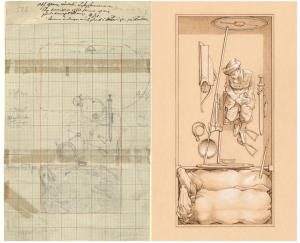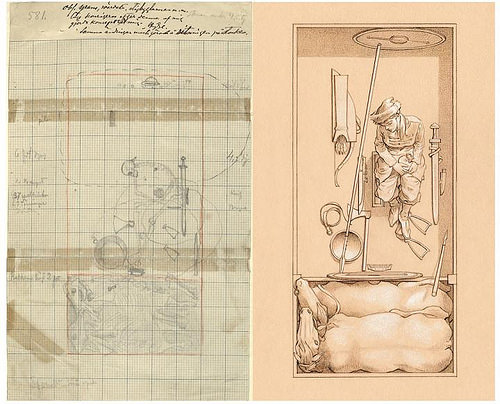
STOCKHOLM UNIVERSITY—War was not an activity exclusive to males in the Viking world. A new study conducted by researchers at Stockholm and Uppsala Universities shows that women could be found in the higher ranks at the battlefield.
Charlotte Hedenstierna-Jonson, who led the study, explains: “What we have studied was not a Valkyrie from the sagas but a real life military leader, that happens to be a woman”.
The study was conducted on one of the most iconic graves from the Viking Age. It holds the remains of a warrior surrounded by weapons, including a sword, armour-piercing arrows, and two horses. There were also a full set of gaming pieces and a gaming board. “The gaming set indicates that she was an officer”, says Charlotte, “someone who worked with tactics and strategy and could lead troops in battle”. The warrior was buried in the Viking town of Birka during the mid-10th century. Isotope analyses confirm an itinerant life style, well in tune with the martial society that dominated 8th to 10th century northern Europe.
Anna Kjellström, who also participated in the study, has taken an interest in the burial previously. “The morphology of some skeletal traits strongly suggests that she was a woman, but this has been the type specimen for a Viking warrior for over a century why we needed to confirm the sex in any way we could.”
And this is why the archaeologists turned to genetics, to retrieve a molecular sex identification based on X and Y chromosomes. Such analyses can be quite useful according to Maja Krezwinska: “Using ancient DNA for sex identification is useful when working with children for example, but can also help to resolve controversial cases such as this one”. Maja was thus able to confirm the morphological sex identification with the presence of X chromosomes but the lack of a Y chromosome.
Jan Storå, who holds the senior position on this study, reflects over the history of the material: “This burial was excavated in the 1880ies and has served as a model of a professional Viking warrior ever since. Especially, the grave-goods cemented an interpretation for over a century”. It was just assumed she was a man through all these years. “The utilization of new techniques, methods, but also renewed critical perspectives, again, shows the research potential and scientific value of our museum collections”.
The study is a part of the ongoing ATLAS project, which is a joint effort by Stockholm University and Uppsala University, supported by Riksbankens Jubileumsfond (The Swedish Foundation for Humanities and Social Sciences) and Vetenskapsrådet (The Swedish Research Council), to investigate the genetic history of Scandinavia.
______________________________________
The drawing is a reconstruction of how the grave with the woman originally may have looked. Credit: The illustration is made by Þórhallur Þráinsson (© Neil Price).
__________________________________________________
Article Source: Stockholm University news release
__________________________________________________
The article “A female Viking warrior confirmed by genomics” is published in American Journal of Physical Anthropology: http://onlinelibrary.wiley.com/doi/10.1002/ajpa.23308/full
__________________________________________________
Receive 30 days free access to the popular new CuriosityStream lineup of documentaries on science, history, nature, and technology as a new Popular Archaeology premium subscriber.
___________________________________________
Travel and learn with Far Horizons.
____________________________________________
This richly illustrated issue includes the following stories: Recent findings shedding new light on the whereabouts of the remains of Philip of Macedon, father of Alexander the Great; how an archaeologist-sculptor is bringing bones of the dead back to life; archaeologists uncovering town life at the dawn of civilization; an exclusive interview with internationally acclaimed archaeologist James M. Adovasio about what makes the Meadowcroft Rockshelter prominent in the ongoing search for the first Americans; what archaeologists are finding at the site of the ancient city of Gath, the home town of the biblical Philistine giant, Goliath; and how scientists are redrawing the picture of human evolution in Europe. Find it on Amazon.com.








